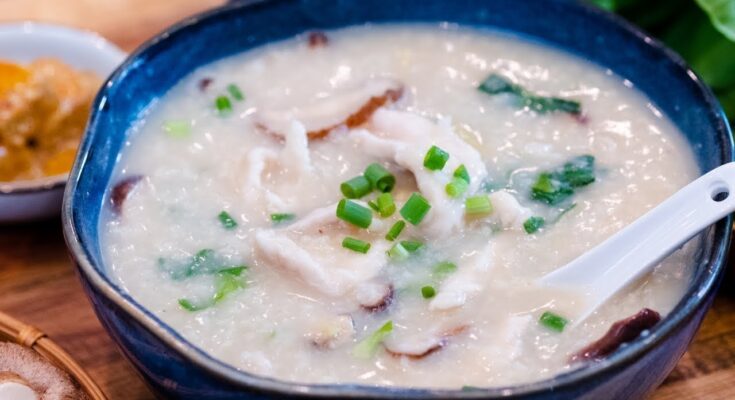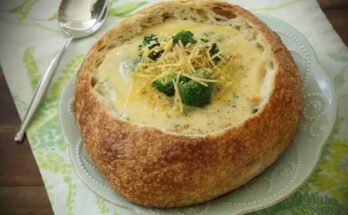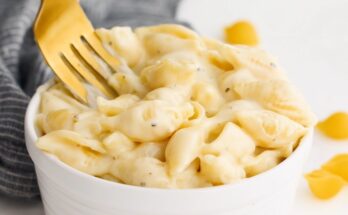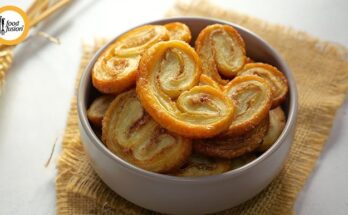Congee Recipe: Congee, a timeless rice porridge, is a beloved dish in many Asian cuisines. Known for its creamy consistency and versatile nature, Congee is a comforting meal that can be enjoyed anytime—whether you’re sick, seeking warmth, or simply craving a delicious bowl of goodness.
Originating from China, Congee has spread across Asia and beyond, evolving into countless variations. Each culture brings its own twist to this humble dish. From savory versions with meat and vegetables to sweet renditions with fruits and sugar, Congee adapts beautifully to your taste preferences.
Why not try making Congee at home? It’s simple, wholesome, and perfect for beginners or seasoned cooks alike. Let’s dive into how to make the perfect Congee step by step!
Types of Congee
Congee comes in many forms, depending on the region and personal preferences:
- Traditional Variations: Chinese Congee (zhou), Japanese okayu, Thai jok, and Vietnamese cháo are popular types. Each version has a unique texture and taste.
- Sweet vs. Savory Congee: Sweet Congee often includes ingredients like dates, coconut milk, or sugar, while savory Congee is flavored with spices, meat, or broths.
- Popular Recipes Worldwide: Chicken Congee, fish porridge, and pumpkin sweet Congee are some universally loved options.
Ingredients Needed for Congee
Here’s what you’ll need to get started:
Essential Ingredients:
- 1 cup of rice (short-grain or medium-grain works best)
- 8-10 cups of water or broth (adjust to your desired thickness)
- Salt to taste
Optional Toppings and Garnishes:
- Shredded chicken, pork slices, or fish fillets
- Soft-boiled eggs
- Green onions, cilantro, or fried garlic
- Soy sauce, sesame oil, or chili oil
Dietary Substitutes:
- Use quinoa or oats instead of rice for a unique twist.
- Replace regular broth with vegetable stock for a vegan version.
Tools and Equipment Required
Making Congee doesn’t require fancy tools, but having the right equipment makes the process smoother:
- A large pot or Dutch oven for stovetop cooking
- A rice cooker or Instant Pot for hands-free preparation
- A wooden spoon or spatula for stirring
- A ladle for serving
Preparing the Rice for Congee
- Choose Your Rice: Short-grain or medium-grain rice works best as they release more starch, creating a creamy texture.
- Wash the Rice: Rinse the rice under cold water until the water runs clear to remove excess starch.
- Soak (Optional): Soaking the rice for 30 minutes can speed up cooking and enhance the texture.
Step-by-Step Congee Cooking Process
Here’s how to make Congee on the stovetop:
- Measure Ingredients: Use a ratio of 1 part rice to 8–10 parts liquid. Adjust for thicker or thinner Congee.
- Bring to a Boil: Combine rice and water or broth in a large pot. Bring to a rolling boil over high heat.
- Simmer and Stir: Lower the heat to a gentle simmer. Stir occasionally to prevent the rice from sticking to the bottom.
- Cook Until Creamy: Let the Congee simmer for 1–2 hours, depending on your desired consistency. Stir frequently as the grains break down and the porridge thickens.
- Season to Taste: Add salt, soy sauce, or other seasonings to enhance the flavor.
Making Congee in a Rice Cooker or Instant Pot
If you prefer a hands-free approach or need to save time, using a rice cooker or Instant Pot is an excellent alternative:
Rice Cooker Congee
- Add the washed rice and water (or broth) to the rice cooker. Use the same 1:8 ratio.
- Select the “porridge” setting, if available. If not, choose the regular cooking mode and monitor the process.
- Once the Congee reaches your desired consistency, stir well and season to taste.
Instant Pot Congee
- Combine rice and liquid in the Instant Pot. Use the same ratio of 1 cup of rice to 8 cups of liquid.
- Set the pressure cooker to “Porridge” mode or manually cook on high pressure for 20–30 minutes.
- Once done, let the pressure release naturally. Open the lid, stir the Congee, and adjust the consistency by adding more water or broth if needed.
Popular Congee Add-Ins
Congee is highly customizable. You can enrich the dish with a variety of ingredients to suit your taste and nutritional needs:
- Proteins: Add shredded chicken, sliced pork, ground beef, or tofu for a heartier meal. Seafood options like fish fillets or shrimp also work wonderfully.
- Vegetables: Stir in chopped carrots, spinach, mushrooms, or corn for added nutrients.
- Eggs: Top your Congee with a soft-boiled or poached egg for a rich and creamy touch.
Flavoring Your Congee
Congee is like a blank canvas—it absorbs flavors beautifully:
- Broth: Replace water with chicken, beef, or vegetable broth for a savory base.
- Spices and Herbs: Add ginger slices, garlic, or star anise while cooking to infuse aroma and depth.
- Regional Seasonings: Experiment with soy sauce, fish sauce, sesame oil, or chili paste depending on the cuisine you’re aiming for.
Serving Congee
Plating Congee can be as simple or as elaborate as you like:
- Serve the porridge hot in bowls, garnished with fresh herbs like green onions or cilantro.
- Add a drizzle of soy sauce, sesame oil, or a dollop of chili paste for a burst of flavor.
- Accompany with side dishes like pickled vegetables, salted duck eggs, or crispy fried shallots for an authentic dining experience.
Congee for Health and Comfort
Congee isn’t just delicious; it’s a nutritional powerhouse and a comforting remedy for many ailments:
- Easily Digestible: Ideal for those recovering from illness or with sensitive stomachs.
- Hydration: Its high water content helps keep you hydrated.
- Versatile Nutrition: Adjust the ingredients to include healthy fats, proteins, and vegetables.
Tips and Tricks for the Perfect Congee
Achieving the ideal Congee is easier with these tips:
- Consistent Stirring: Prevents rice from sticking to the pot and ensures an even texture.
- Adjusting Consistency: Too thick? Add more hot water or broth and stir. Too thin? Let it simmer longer to thicken.
- Experiment with Toppings: From crispy bacon to shredded nori, the options are endless.
Storage and Reheating
Congee tastes just as good the next day if stored properly:
- Refrigeration: Transfer leftover Congee to an airtight container and refrigerate for up to 3 days.
- Freezing: Divide into portions and freeze for longer storage. Thaw overnight in the fridge before reheating.
- Reheating: Add a splash of water or broth to loosen the porridge as it reheats on the stovetop or microwave.
FAQs about Congee Recipe
What is congee?
Congee is a type of rice porridge or gruel popular in many Asian countries. Made by slow-cooking rice in a great amount of water until it breaks down into a thick, creamy consistency, it can be served plain or flavored with various toppings such as meats, vegetables, and spices to enhance its taste.
How do you make congee?
To make congee, you start by rinsing short-grain rice and then simmering it in a large pot of water. The typical ratio is about 1 part rice to 8-10 parts water. Cook this mixture on a low heat for several hours, stirring occasionally to prevent sticking, until the rice is completely softened and the mixture takes on a thick, porridge-like consistency. For flavor, salt, ginger, and other seasonings can be added during the cooking process.
What are some common toppings for congee?
Congee’s versatility allows for numerous toppings. Popular choices include shredded chicken, sliced fish, ground pork, century eggs, pickled vegetables, and fresh herbs. For added texture and flavor, peanuts, sesame oil, or soy sauce are also frequently used.
Is congee healthy?
Yes, congee is considered a healthy meal option. It is easily digestible, making it a go-to food for digestive health and recovery during illness. The basic ingredients make it low in fat, but the nutritional value can vary based on the toppings used, which can add protein and other nutrients.
Can you store and reheat congee?
Absolutely. Congee stores well in the refrigerator for up to a few days. When reheating, you might need to add a bit of water or broth to adjust its consistency as it tends to thicken when cooled. Reheat on the stove or in a microwave, stirring well to maintain an even, creamy texture.
Conclusion
Congee is a versatile, comforting dish that can be tailored to your preferences. Whether you prefer it simple and plain or loaded with toppings, this rice porridge is a must-try recipe for any home cook. With the step-by-step guide provided, you’ll master the art of making Congee in no time.
So, gather your ingredients, unleash your creativity, and enjoy a steaming bowl of this beloved dish!



